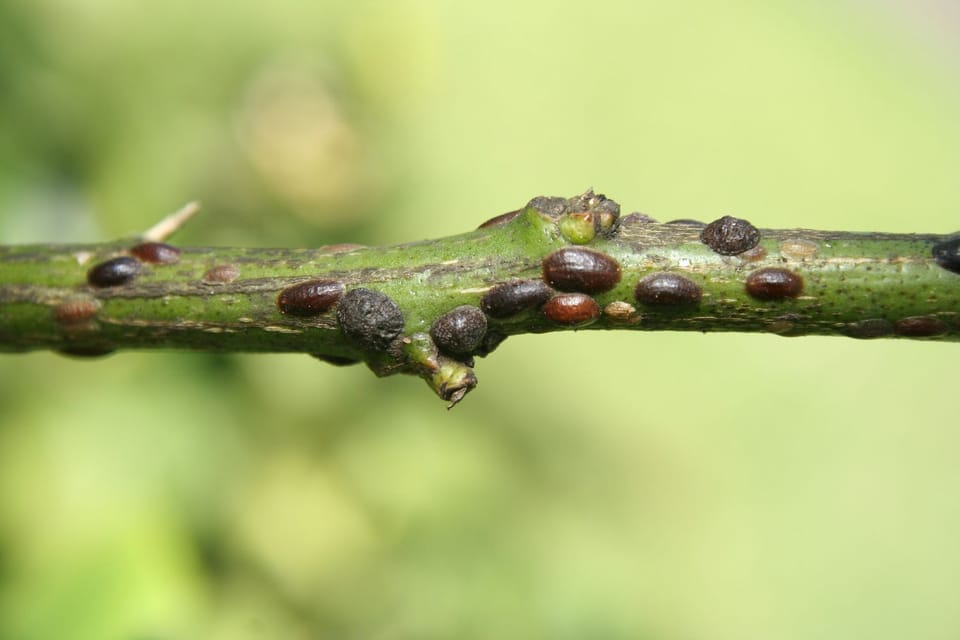Common houseplants pests and natural ways to get rid of them for good.

If you are finding insects, third wheeling in you and your plant baby then probably it can steal your plants life and leave you sobbing like a sissy. So, here is the list of pests that are hella problematic and menacing for your plants.
MEALY BUGS

Mealybugs are a type of cottony, mobile insect that often can be seen in gangs rolling on your houseplants. These little white snails give birth to 600 little bugs in just a week or two.
No need to toss your plants out. You can use a mealy bug spray or you can do a spot treatment using a isopropyl alcohol and a q-tip. Dabbing the alcohol directly onto the mealybugs will easily kill them on the spot.
Aphids

These creeps are plant sucking insects and after they are full they poop out a sticky, sweet honeydew from their rear, which then attracts other pests, like ants or provides a medium for sooty mold to grow on. God! A disaster for your plant baby.
Aphids are born wingless, but if you see an aphid with wings, it's a signal that the colony got too crowded and they are looking for a new houseplant for which to feed.
Be brutal with them cz they are very persistent. So, jus squish them with your fingers and this is no cap it is a solulu or what you can do is on a warm day, early in the morning take your infected houseplant outside and spray it vigorously with a hose. Be careful not to break the plant if it's delicate or newly growing. This can be done by spraying short, strong bursts.
Common Whitefly

You can think they are white moths or mealy bugs but trust me this is a bigger problem cz they will flight around you like Rafale. They use their mouthparts to suck juices from plants, which can cause leaves to yellow and fall off prematurely.
Additionally, whiteflies, like aphids, exude honeydew, which becomes an attractant for sooty mold. If you allow whiteflies to multiply, then they can attack your plant enough to weaken it.
Now you can do two things either use yellow sticky traps or orr ORR ORR bet this will blow your mind, you can also introduce a beneficial insect. The concept is you introduce a homie insect from your side to settle the beef with the opps. Not jus a insect but you can ✨ladybugs✨. Those orange beetles with black spot.
Common brown scale

These are immobile pests that stick themselves to stems and leaves. Scale can be a real problem indoors because quite frankly, they have a good temperature year round, which means they'll likely reproduce around the clock.
To deal with them is a task. Firstly, place a plastic bag or some covering around the soil of your plant. This prevents any scale from falling into your soil. Then get a natural, rosemary-based insecticidal soap. Spray this on the plant so it's nice and soapy.
Run your fingers along the stems and plant leaves, turning up the scale with your fingernails. If you don't want to touch the insects, you can use an old toothbrush and after you've sufficiently soaped and scraped the plant, give it a good, sharp spray with your hose or your shower. You'll want to get all the soap off the plant so it doesn't affect growth.
Spider Mites

They are probably some of the most feared of the common household insect pests, largely because they are so difficult to get rid of. Mites prefer dry conditions, so keeping the air humid and the plant on the wet side can help.
Spider mites also have a range of natural predators, including other mites like Phytoseiulus sp. and generalist predators like minute pirate bugs and lacewing larvae.
Gnats

Here we are including fungus gnats as a common houseplant pest, only because they are common and more of an annoyance to people versus plants. Fungus gnats look similar to fruit flies, and are often mistaken as such. They are pretty feeble fliers and can often be seen circling around soil, particularly if it's fresh, damp compost. Their larvae, which are really the more cause for concern here, prefer to feed on fungi in the soil, which you can only get in moist conditions. They technically can eat plant material, but if the fungi levels are high, they often won't.
BTI, or Bacillus thuringiensis, which is a natural and safe bacteria that you can sprinkle in the soil and some yellow sticky traps to catch the adults.
Thrips

This is a less commonly found pest but if we are covering the whole syllabus so mm yeah. So if you are finding a silver discoloration on your plant or very tiny unidentified black spots on the leaves then probably thrips frass. Frass is a modern word for thrips' crap.
Now the thing is they that I don't know if they are caeruleaphile or what but they are very attracted to blue colour so you can use blu colour sticky traps or you can use a natural predator of thrips which is Minute Pirate Bug.
A lot of pests ain't they? Okay the site is under maintenance but we still managed to deliver you your weekly newsletter. Site is soon going be nicer. Okay on this note. Signing out- Anmol Rajput. Do chit chat in the engagement tab below and for queries reach us at queriesanmolrajput@gmail.com
Stay strong gift plants. SAYONARA!
Member discussion